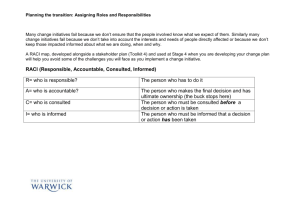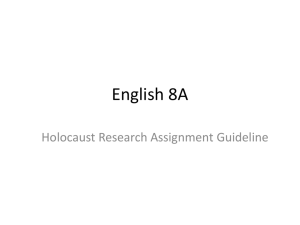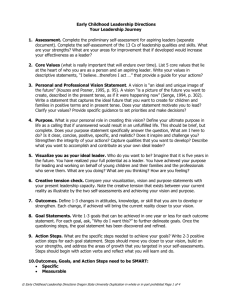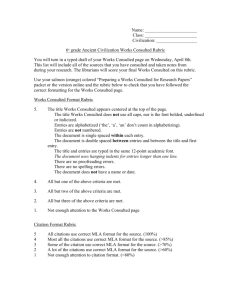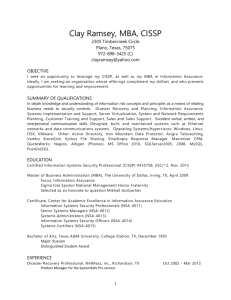Checklist of key features of service delivery models co
advertisement
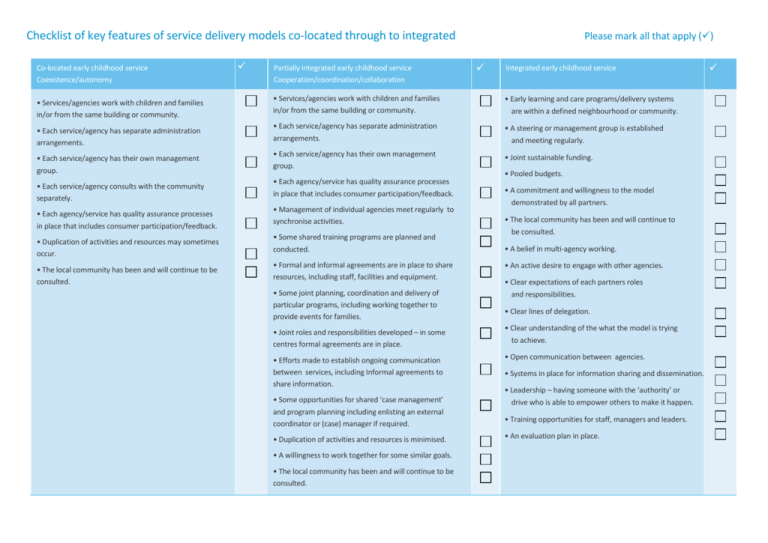
Checklist of key features of service delivery models co-located through to integrated Co-located early childhood service Coexistence/autonomy • Services/agencies work with children and families in/or from the same building or community. • Each service/agency has separate administration arrangements. • Each service/agency has their own management group. • Each service/agency consults with the community separately. • Each agency/service has quality assurance processes in place that includes consumer participation/feedback. • Duplication of activities and resources may sometimes occur. • The local community has been and will continue to be consulted. Partially integrated early childhood service Cooperation/coordination/collaboration Please mark all that apply () Integrated early childhood service • Services/agencies work with children and families in/or from the same building or community. • Early learning and care programs/delivery systems • Each service/agency has separate administration arrangements. • A steering or management group is established • Each service/agency has their own management group. • Joint sustainable funding. • Each agency/service has quality assurance processes in place that includes consumer participation/feedback. • A commitment and willingness to the model • Management of individual agencies meet regularly to synchronise activities. • Some shared training programs are planned and conducted. • Formal and informal agreements are in place to share resources, including staff, facilities and equipment. • Some joint planning, coordination and delivery of particular programs, including working together to provide events for families. • Joint roles and responsibilities developed – in some centres formal agreements are in place. • Efforts made to establish ongoing communication between services, including Informal agreements to share information. • Some opportunities for shared ‘case management’ and program planning including enlisting an external coordinator or (case) manager if required. • Duplication of activities and resources is minimised. • A willingness to work together for some similar goals. • The local community has been and will continue to be consulted. are within a defined neighbourhood or community. and meeting regularly. • Pooled budgets. demonstrated by all partners. • The local community has been and will continue to be consulted. • A belief in multi-agency working. • An active desire to engage with other agencies. • Clear expectations of each partners roles and responsibilities. • Clear lines of delegation. • Clear understanding of the what the model is trying to achieve. • Open communication between agencies. • Systems in place for information sharing and dissemination. • Leadership – having someone with the ‘authority’ or drive who is able to empower others to make it happen. • Training opportunities for staff, managers and leaders. • An evaluation plan in place.

